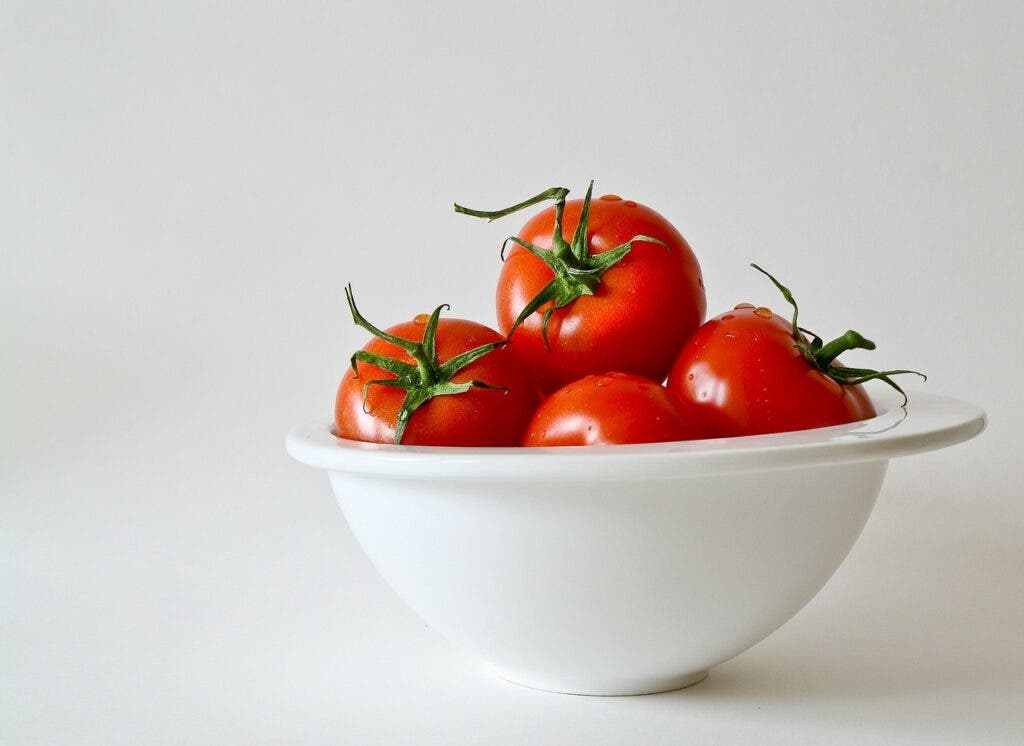Researchers are working on taking cholesterol out of the tomato — and putting a precursor of vitamin D3 in there, instead.

Vitamin D is an important compound for the healthy development and maintenance of our bodies. It is directly involved in the absorption of several important elements in the intestines and our bodies’ ability to use calcium. However, very few food items contain meaningful levels of this compound, and plants are especially poor in this regard. People get some of their vitamin D3 needs through their skin, where the compound is synthesized under exposure to sunlight, but we still rely heavily on diet for this compound.
A team of European researchers is aiming to change that, however, by modifying tomatoes to reduce their cholesterol content and increase the levels of provitamin D3, a precursor molecule of the vitamin, they produce naturally. Their approach involved genetically engineering the plants to block the action of an enzyme that transforms the provitamin into cholesterol.
Tomato 2.0
Deficiencies of Vitamin D are an important cause of global health issues worldwide. Such deficiencies can lead to an increased risk of developing conditions or diseases such as cancer, Parkinson’s, or dementia. An estimated one billion people worldwide suffer from complications caused by vitamin D deficiency, the authors explain.
For the study, the team edited a gene in tomatoes that encodes the 7-dehydrocholesterol (7-DHC)reductase enzyme. This substance works to convert provitamin D3 into cholesterol.
“[The precursor] 7-DHC is present in leaves and immature green fruits but not in ripe fruit, which is most consumed,” the paper explains.
In the skin, provitamin D3 is converted into vitamin D3 by exposure to UV light. According to the team’s measurements, the amount of provitamin D3 contained in one of their modified tomato fruits is equivalent to the amount of vitamin D3 — were it to be transformed — contained in two medium-sized eggs or 28 grams of tuna. The modified tomato fruits could, therefore, satisfy the daily vitamin D3 requirements for children as well as adults.
The team notes that their modifications do not lead to any notable impact on the plant’s rate of development or on total yield.
Such a development is particularly exciting as people primarily source vitamin D3 from animal products in their diet. These products tend to be more expensive and more difficult to store and commercialize than plant products, meaning fewer people tend to have access to them. They are also more resource-intensive to produce, putting an outsized strain on our environment compared to plants such as cereals, vegetables, or fruits.
Combating world hunger is one of the United Nations’ Sustainable Development Goals and vitamin D3 is a vital micronutrient that can be hard to come by through poorer diets. Ensuring that people have a cheap source of vitamin D3 would go a long way toward combating world hunger. Having such an option be plant-based would be ideal, as it would also help protect the environment from the strain of our food production industries — a strain which will only magnify as populations increase and diets diversify.
The paper “Biofortified tomatoes provide a new route to vitamin D sufficiency” has been published in the journal Nature.


